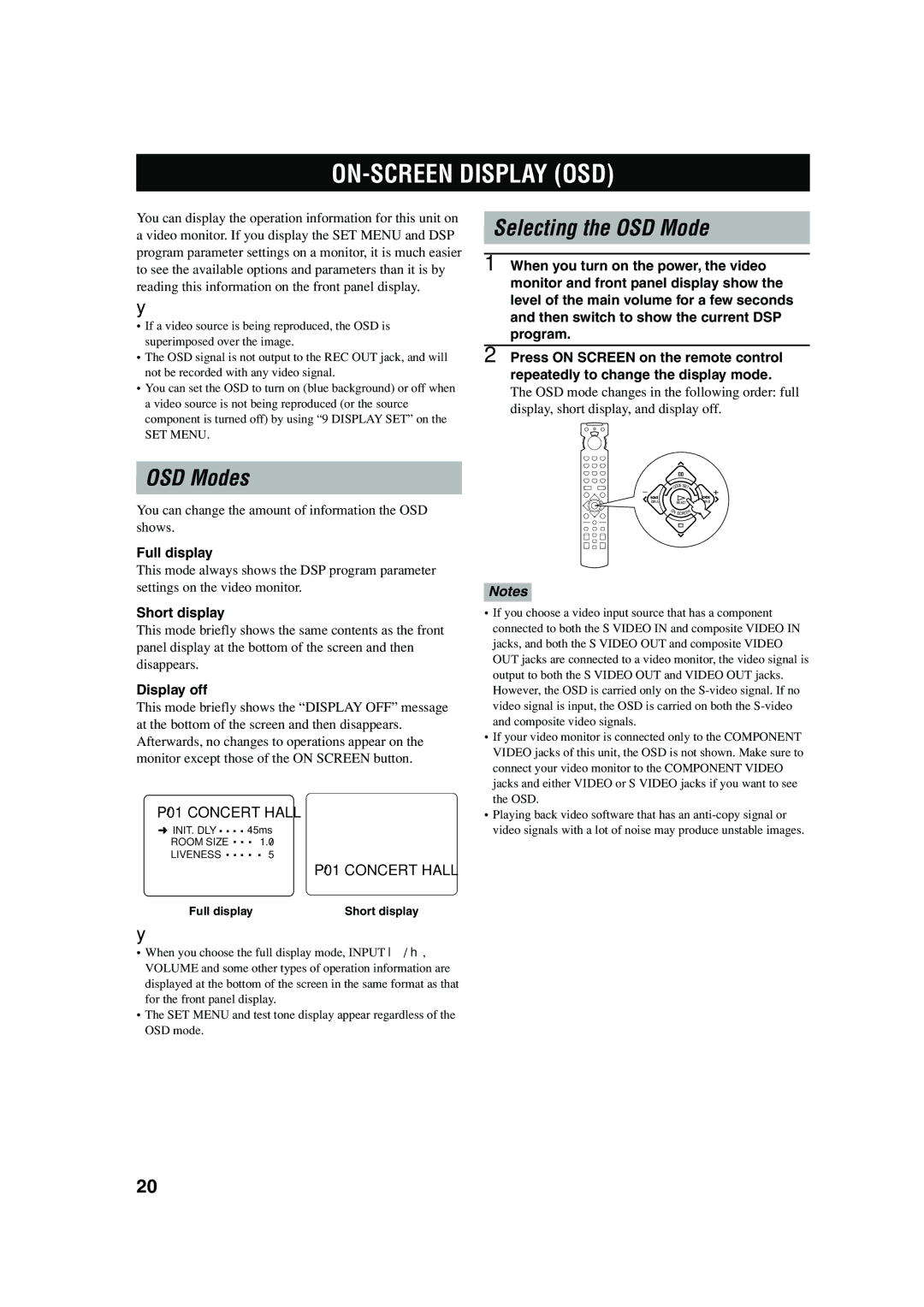RX-V620RDS specifications
The Yamaha RX-V620RDS is a powerhouse in the world of home theater receivers, offering outstanding sound quality and a range of features that make it a popular choice for audio enthusiasts. Launched during the late 1990s, the RX-V620RDS has become known for its versatility and robust performance, catering to the needs of both casual listeners and serious audiophiles.One of the standout features of the RX-V620RDS is its multi-channel processing capability. Supporting 5.1 channels, this receiver allows users to enjoy surround sound experiences, making it ideal for movie nights and gaming sessions. The onboard Dolby Digital and DTS decoders ensure that audiences receive enveloping audio that enhances their overall experience. Moreover, the unit provides an impressive power output, delivering 90 watts per channel into 8 ohms, which means it can drive demanding speakers effortlessly.
In terms of connectivity, the Yamaha RX-V620RDS does not disappoint. It is equipped with multiple audio and video inputs, including composite and S-video inputs, along with a dedicated phono input for vinyl enthusiasts. For video sources, the receiver includes a variety of outputs, accommodating different types of displays, from standard CRT televisions to modern flat screens.
Another significant feature of the RX-V620RDS is the inclusion of the Radio Data System (RDS) tuner. This technology allows the receiver to display information such as station names and song titles, enhancing the radio listening experience. Alongside this, the receiver supports FM and AM bands, providing a wide spectrum of entertainment options.
The RX-V620RDS also showcases Yamaha's commitment to build quality and user experience. The intuitive on-screen display simplifies navigation through settings and configurations, ensuring that even those less familiar with tech can easily set up their systems. Additionally, the remote control is user-friendly, allowing effortless operation from anywhere in the room.
Furthermore, the RX-V620RDS integrates Yamaha's patented YPAO (Yamaha Parametric Room Acoustic Optimizer) technology, which automatically measures the room acoustics and adjusts the audio settings for optimum sound quality. This feature is particularly valuable in home theater setups, where room characteristics can greatly influence audio performance.
In conclusion, the Yamaha RX-V620RDS remains a noteworthy receiver that combines advanced features, solid performance, and user-friendly design. With its multi-channel processing, extensive connectivity options, and innovative technologies, it has rightfully earned its place as a reliable choice for anyone looking to elevate their home audio experience. Whether you are a music lover or a home theater aficionado, the RX-V620RDS is equipped to deliver impressive sound for years to come.

